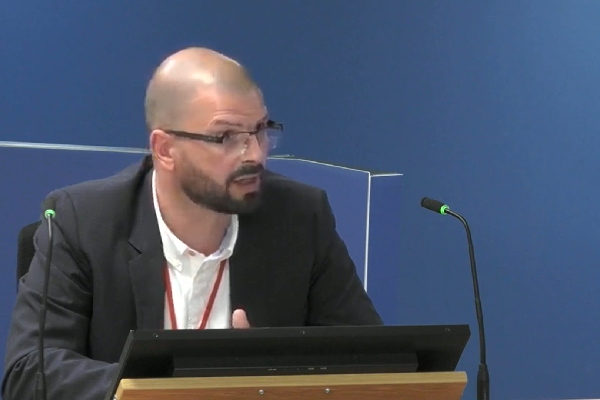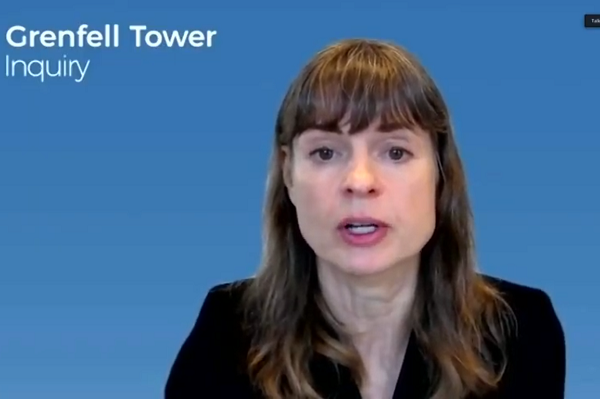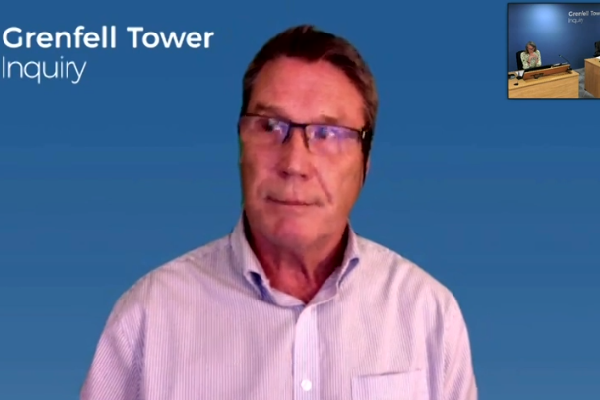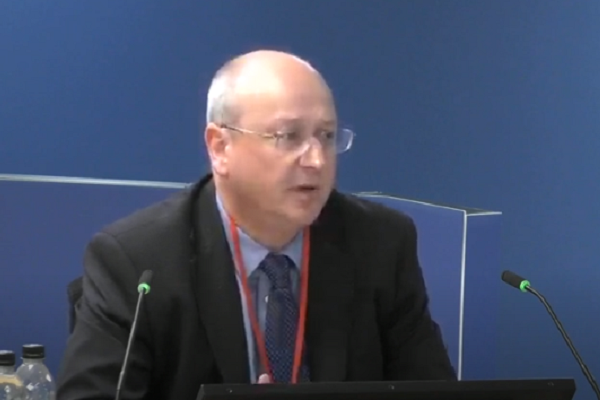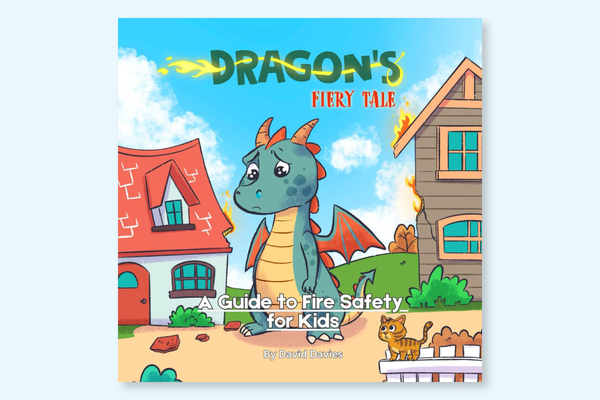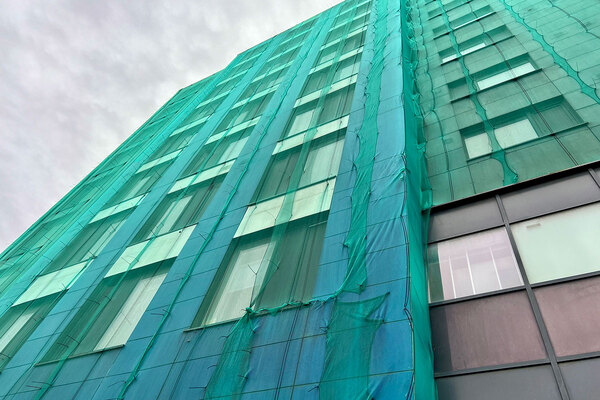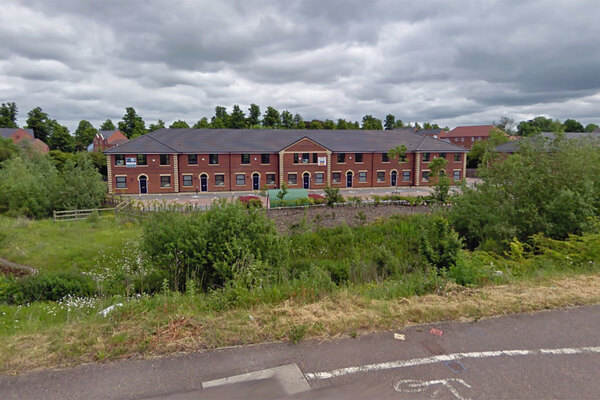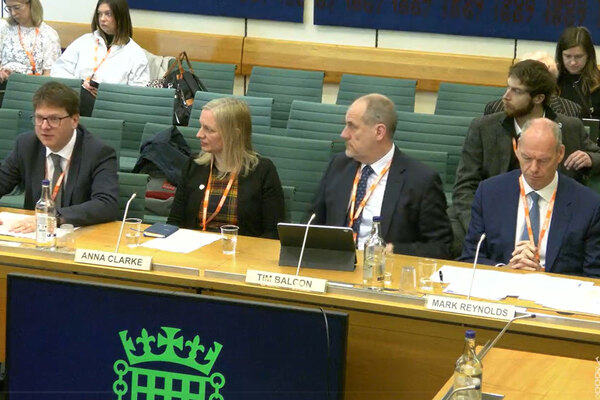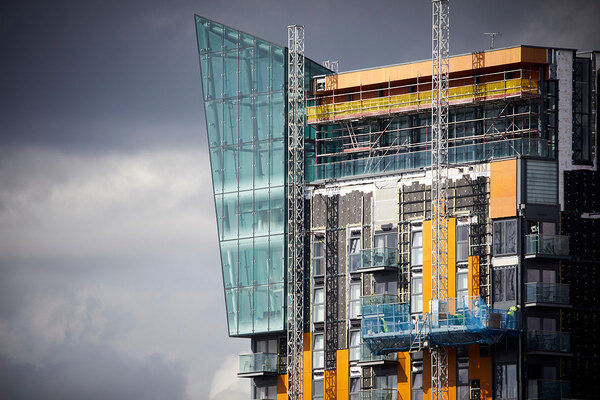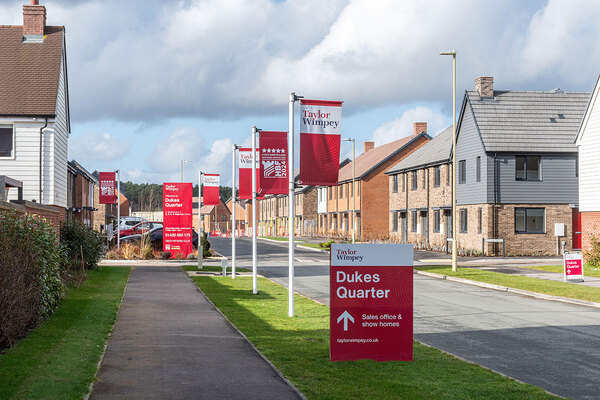Sub-contractor did not check compliance of Grenfell smoke control system, saying it was merely ‘middleman’
The sub-contractor responsible for the electrical work on Grenfell Tower did not check the compliance of the smoke control system it was charged with overseeing, claiming that it was merely a “middleman” in the construction project.
Alan Whyte, senior contracts engineer at sub-contractor JS Wright, this morning gave evidence to the inquiry about his involvement in the fatal refurbishment of the tower.
JS Wright was appointed a sub-contractor by primary contractor Rydon in July 2014 to take over the mechanical and electrical elements of the refurbishment.
This included an upgrade to the tower’s defunct smoke control system – the feature designed to limit the spread of smoke through the block in the event of a fire.
However, JS Wright contracted this work out to another sub-contractor, PSB, which produced the designs and purchased the components of the new system.
The inquiry has previously heard that this system was a bespoke design, which did not comply with guidance and utilised the “lowest possible standard” of dampers – the devices that close vents to the shafts in the event of a fire.
PSB witnesses have told the inquiry this week that these shortcomings were an inevitable consequence of the way the building was designed and that it simply sought to deliver the best system it could under the circumstances.
Today, Mr Whyte said that his firm had little involvement in the work beyond passing on the designs to building control.
This echoes the evidence of others in the long chain of contractors and consultants on the project, when asked about similar defects.
At the start of the inquiry, lead counsel to the inquiry Richard Millett criticised the companies involved in the refurbishment for a “merry-go-round of buck passing” with regard to the “serious faults and departures from statutory requirements” in the refurbishment project.
Asked what due diligence JS Wright had carried out ahead of the appointment, Mr Whyte said: “To my understanding, there was a specialist company there that had some involvement, and had given advice to the team pre-construction and as they had a background of what was going on on site, and were familiar with it I think the decision was made within JS Wright that they were the best people to take the project forward.”
“Did you consider that JS Wright was in a position to provide meaningful supervision and scrutiny of PSB’s design and commissioning work on the smoke control system?” asked Kate Grange, counsel to the inquiry.
“To scrutinise a specialist sub-contractor, I think we’d have to have the in-house capability to be that specialist sub-contractor,” said Mr Whyte.
Instead he said that JS Wright was simply “the middleman [passing] information from PSB on to the likes of Max Fordham [consultant engineers] and building control”.
He insisted that responsibility for design sat with PSB, and JS Wright’s role was merely to “facilitate that through flow of information”.
He said that Max Fordham was responsible for co-ordinating with building control – contradicting a witness from Max Fordham who said this became JS Wright’s responsibility after the sub-contractor was appointed in July 2014.
PSB sent the firm technical drawings for approval in November 2014, which Mr Whyte said just represented it carrying out a role as “middleman, conduit for information from a specialist back to our client [Rydon] for review”.
When Rydon witnesses gave evidence last year, they also described their role as simply being a conduit – passing information on the cladding designs from specialists to building control for approval, with no responsibility to check its compliance independently.
Asked if he had made sure that Exova, the fire engineers advising on the project, looked over the smoke control proposals for compliance, he said: “I don’t think so.”
“Did you ever think that it might be good idea to ensure that PSB’s proposals were looked over by a fire engineer, as part of the checking process on the project?” Ms Grange asked.
“Thinking about things now, most definitely… I would have expected that to have occurred before any approval was given,” Mr Whyte replied.
The inquiry has heard across the last week that ‘dampers’ – devices that open to allow smoke into the vents and close to prevent it from seeping out – were the “lowest possible standard” and had failed smoke leakage tests.
Asked who was responsible for assessing the compliance and suitability of components such as this, Mr Whyte said Max Fordham was. But this contradicted the evidence of Max Fordham’s engineer yesterday, who said the responsibility lay with JS Wright following its appointment.
“Where did you get your understanding from that that’s what Max Fordham were doing?” asked Ms Grange.
“They were the consultant and that was my understanding of their role. I was quite shocked when I heard that [claim that checking compliance was JS Wright’s responsibility] yesterday when I was listening to proceedings,” he said.
“So does it follow from your answers that you yourself never considered the fire rating of the dampers and whether the product that had been specified had the appropriate fire rating and fire certification?” asked Ms Grange.
“I wouldn’t have done, I would have taken it that that had already been determined and approved before,” he replied.
Mr Whyte’s signature appeared on a commissioning report on the system in April 2016, but he said this was merely to show that “the package of works was complete”.
Mr Whyte was also asked about a defect that was reported in June 2017 – just days before the fatal fire at the tower.
Rydon had noted that the system was not operating correctly in ‘environmental mode’ – when there is not a fire – with the dampers not opening as they should.
Mr Whyte explained that he believed this was due to internal temperature sensors potentially not reaching the 25°C necessary to activate the system, which also functioned to cool the building on a hot day.
However, he said if there was a fault which meant that “the system as a whole wasn’t working”, this could have affected its ability to function in smoke control mode.
The inquiry was shown a purchase order from JS Wright’s parent company requesting a maintenance visit from PSB on 12 June – just two days before the fire – but Mr Whyte said he did not know what happened after it was issued.
The inquiry continues, with evidence from witnesses relating to the gas supply due to give evidence next week.
Sign up for our weekly Grenfell Inquiry newsletter
Each week we send out a newsletter rounding up the key news from the Grenfell Inquiry, along with the headlines from the week
Already have an account? Click here to manage your newsletters
